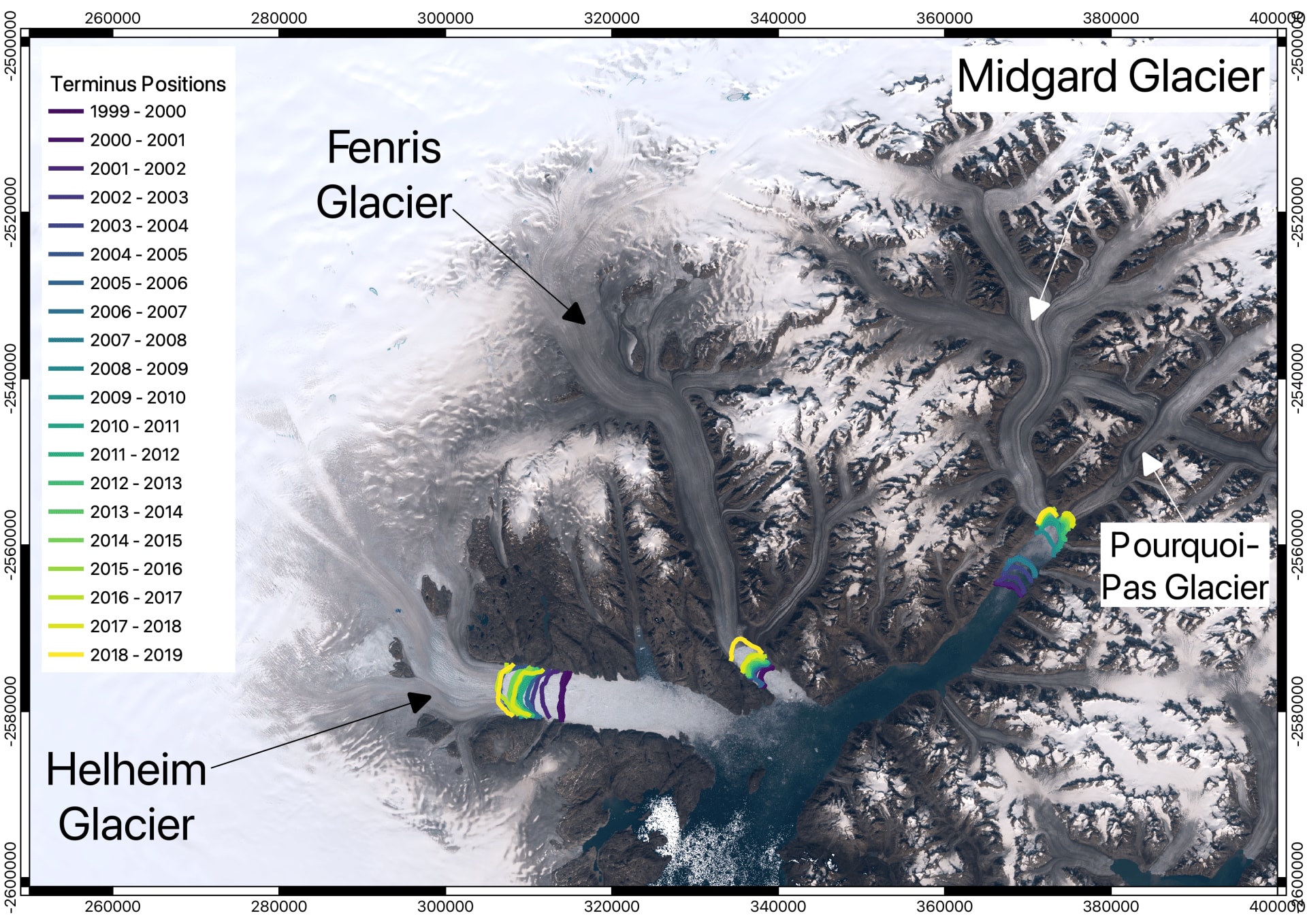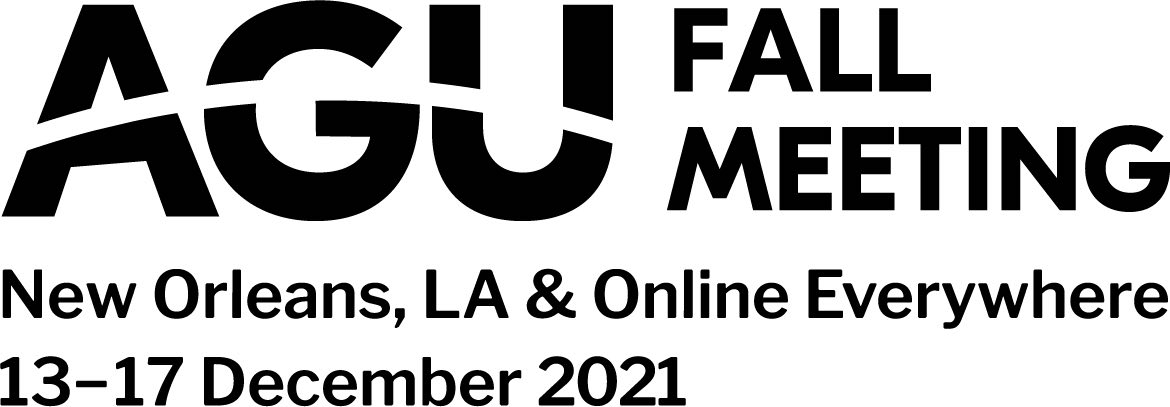- Jessica Mejia
- Talk 1, Spatial and Temporal Lags in Meltwater Propagation Through the Greenland Ice Sheet Hydraulic System
- Talk 2, Best practices for building a more inclusive glaciology through cryocommunity.org (Invited)
- View the CryoCommunity talk on YouTube
- Donglai Yang: Numerical Modeling of Frictional Melting Dynamics Constrained by Surface Micro-Roughness
- Courtney Shafer: Comparing the Shallow-Shelf and L1L2 Approximations using BISICLES in the Context of MISMIP+ with Buttressing Effects
- Kristin Poinar: Are the Sermilik Fjord glaciers terminus-controlled, runoff-controlled, or runoff-adapting? Decomposition of glacier speed maps at Helheim, Fenris, Midgard, and Pourquoi-Pas Glaciers, 2006-2019

This agrees with previous classifications of Helheim Glacier as usually terminus-controlled (2009, 2010, 2015, 2016, 2017) [1,2,3] and sometimes runoff-controlled (2013) [1]. It agrees less with a study that found Helheim was runoff-controlled over 2009-2017 [7].


